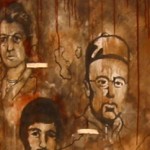With this post we reach the end of my series on collaboration. You’ll notice a major theme of these articles has been leadership:
- With Take a Lead we looked at a single leader driving a collaboration with any other participants following their lead.
- With Take a Seat we looked at the leader starting a project then completely handing it off to another artist.
- With Take a Role we looked at co-leadership, but with each person taking charge of completely different aspects of the project.
- With Take a Village we looked at one leader with a single vision or goal leading a larger group of artists (or non-artists).
And for this final post we’re going to look at true co-leadership. It’s similar to what we looked at with Take a Role, but with both artists working on the same tasks. That may seem like a subtle difference, but it raises the risk factor exponentially. This is pure collaboration because you’re no longer working with a single leader’s vision. You are developing a concept and a plan together and you’re executing that concept and plan together.
This does not work on its own. To demonstrate that thought, I’ll use a basic example I’ve seen a number of times. I’ve taken part in of a number of events where there’s an open canvas available for anyone’s contribution. Usually a theme is given. The only uniting factor is that theme—there is no leadership. You can imagine the result is predictably poor. That’s not to say to experience has no merit. However the final product is nothing you’d want to display or even keep. If all participants were established artists, certainly the results would improve. But I would propose that even then, the end result would be poor.
My most significant experience with full collaboration came in a project I did with my wife a couple years ago. Everything was equal collaboration including the theme. It was an installation piece and was titled “The Re-Gathering.” Here is the description we posted when it was exhibited:
The New Testament records a number of instances of Christ appearing to people after His resurrection. One of these was the on the road to Emmaus. He spoke at length with some traveling men, but they did not recognize Him until he sat at a table and broke bread with them. At that point they knew Him. And after He had gone, they said to one another, “Were not our hearts burning within us while He was speaking to us on the road, while He was explaining the Scriptures to us?” In this piece of artwork, we see empty chairs, though they represent the players in this story—those whose hearts burned within them, and Christ (who Mary called “Rabboni”), who was full of glory, yet humbled Himself to be with mankind and bring salvation through His suffering.
Years ago we had purchase four old chairs from an antique shop for use in our kitchen. They turned out to be too unstable for daily use, so we used them in our piece. Four chairs were placed in a circle facing inward around a table that held a large chunk of bread. Three chairs represented the travelers in our story. We fashioned stylized hearts out of painted paper and cloth and mounted them atop pieces of wire that stuck up from the middle of each chair. They were positioned approximately where your heart is located when sitting down. They of course signified the men’s hearts “burning within them” as they were in the presence of Christ. And Christ was symbolized by the fourth chair, which was filled with symbolism:
- The top part was painted gold to represent His glory.
- “Peace be with you” was carved into the top of the back side. On the front side the same phrase was carved, but in greek. This was the greeting Christ usually gave when appearing to people after His resurrection.
- A slit was cut clean through one of the side posts and painted red to represent His pierced side, while nails were hammered into the corners of the chair to represent his suffering on the cross.
- In the four openings below the seat and above the crossbars the words “Rabboni” and “Teacher” were mounted, having been cut out of white felt with metallic paper placed behind.
- Weathered, distressed material was wrapped loosely around the feet of the chair, symbolizing Christ’s once-buried body, having left the burial wrappings behind.
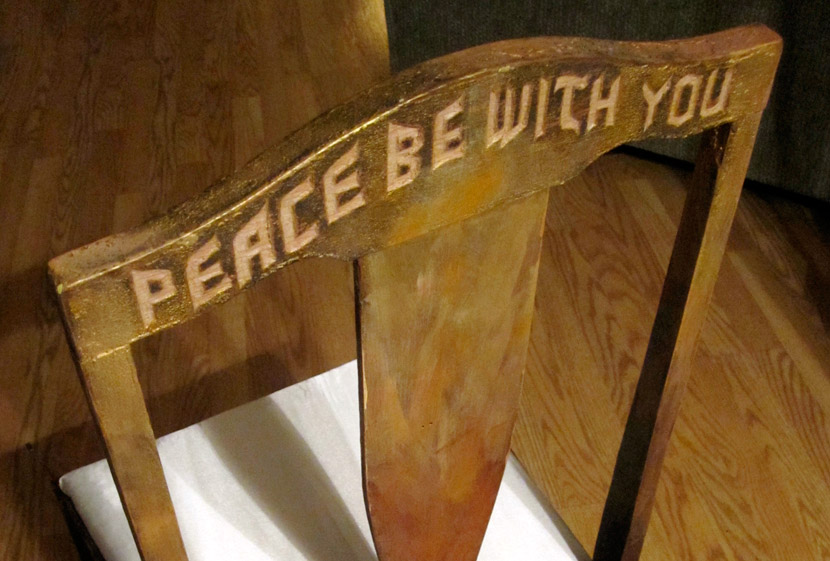
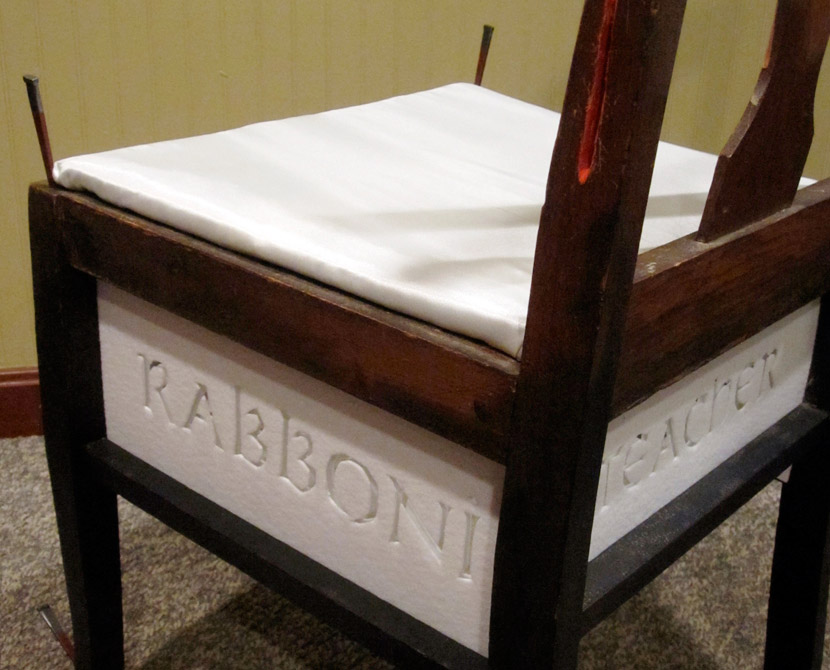
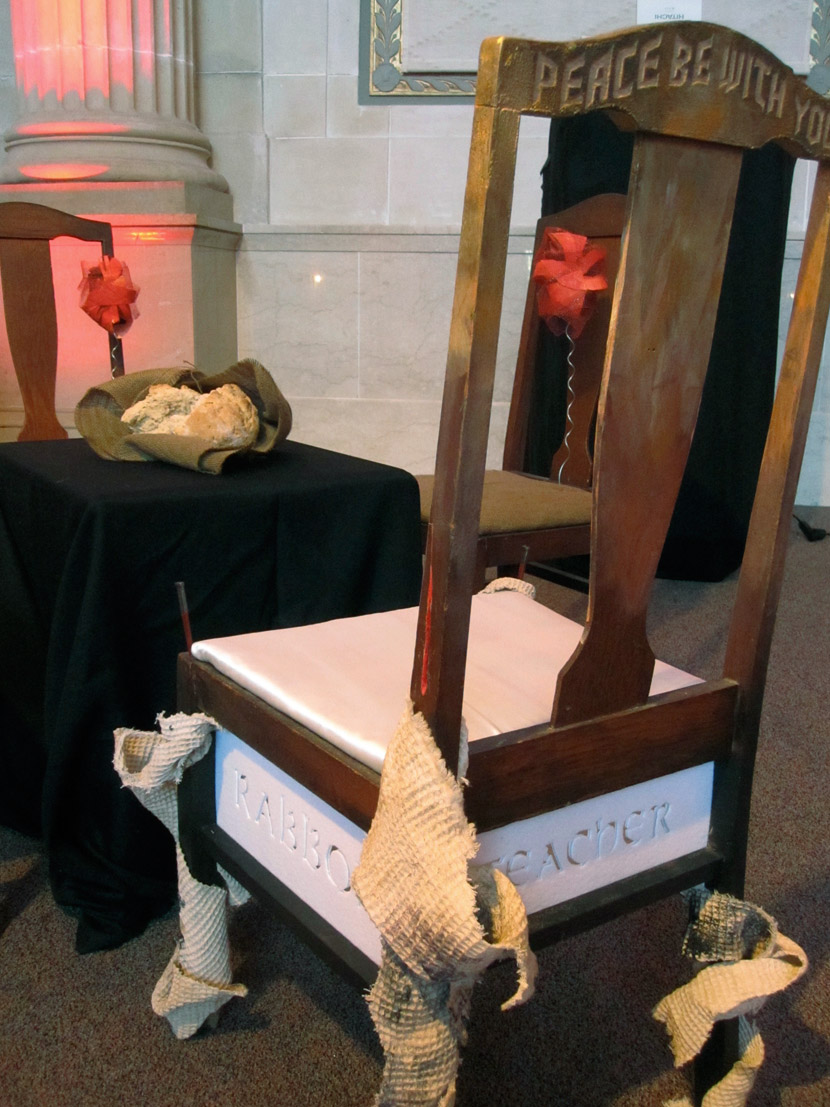
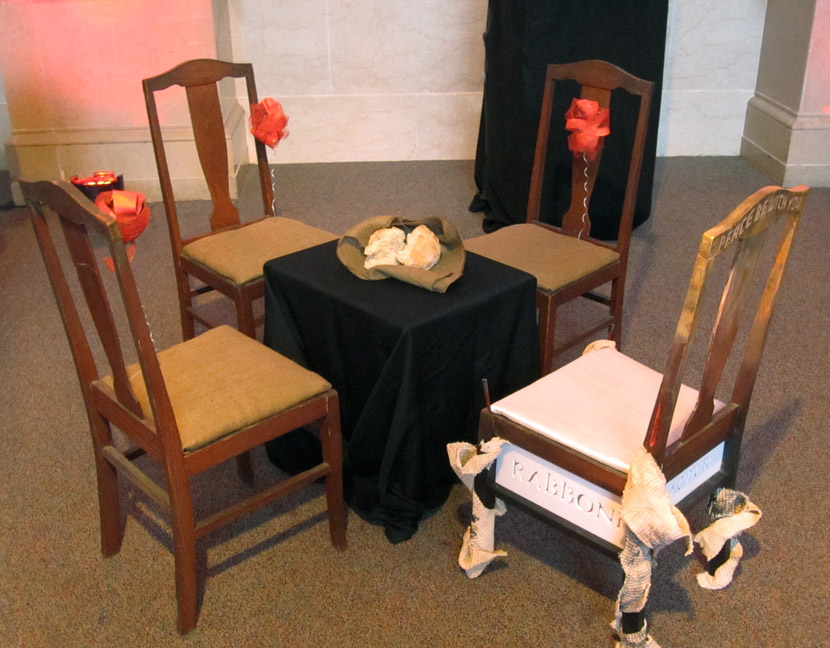
Getting to this final result required a lot of give and take. It was an abstract piece in the sense that the elements were symbolic. Personally, I feel collaboration on abstract pieces is easier, but you may find otherwise. The main thing to be aware of is that this type of collaboration takes a level of maturity, both as artists and as coworkers. As I’ve mentioned before, if you’re only in it for the experience, wonderful. But if you want a solid final piece, you need competent partners who trust and respect each other. It’s a risk, but that’s what makes it exciting! Stay open minded to all input. Don’t envision a finished piece in your head and be unwilling to budge from that. Your target is moving, so you need to adjust your expectations and your strategy accordingly.
The point of these articles was not to document every single method of collaboration. And while I did supply practical tips, the main goal was to inspire you to experiment with collaboration by providing examples, and to intrigue you with the possibilities. The world of fine art can be overanalyzed. (I supposed I contribute to that via this blog.) Even if you are an established artist, and especially if you’re not, don’t take yourself so seriously that you can’t enjoy an endeavor that falls outside of your main artistic goals and one that may very well fail.
And finally, remember this. If you want to impact others through your creations, you need to interact with others while creating.
Articles in this series on collaboration
- Introduction
- Take a Lead
- Take a Seat
- Take a Role
- Take a Village
- Take a Hand

